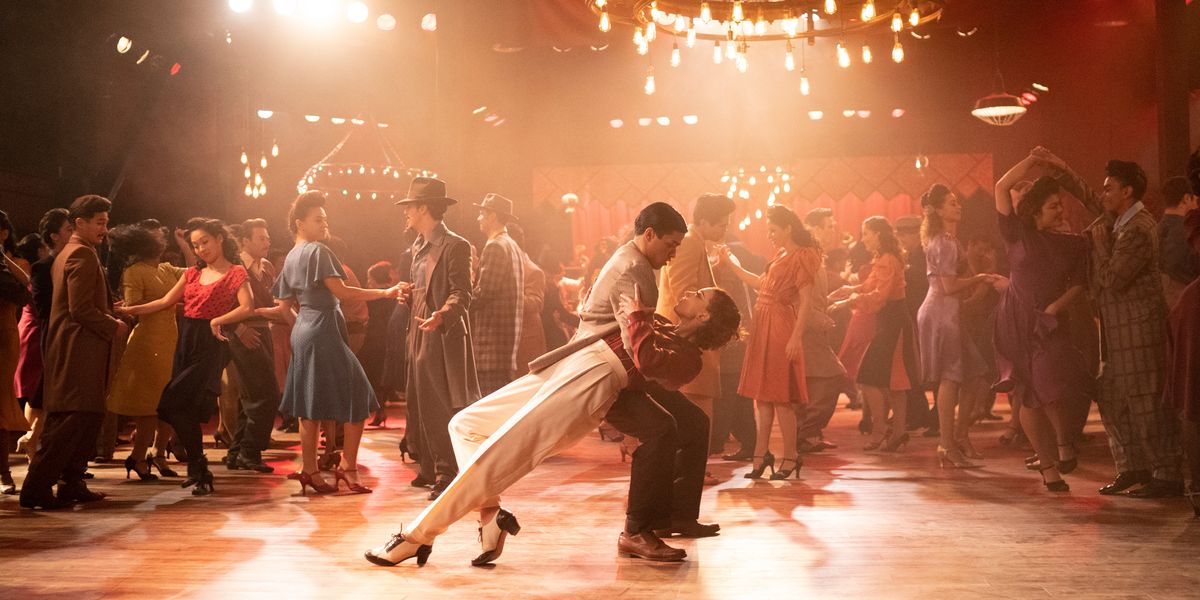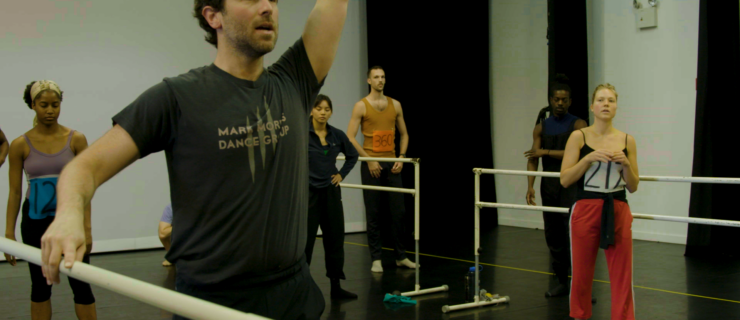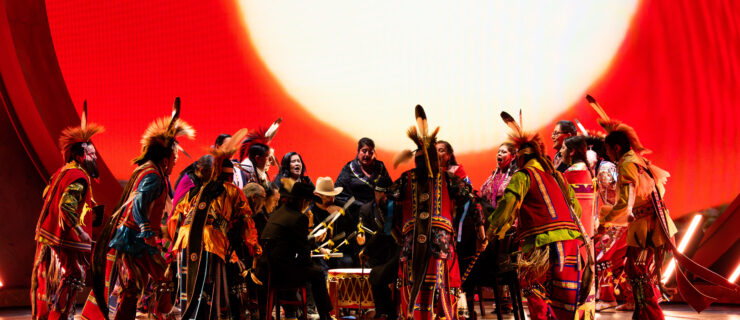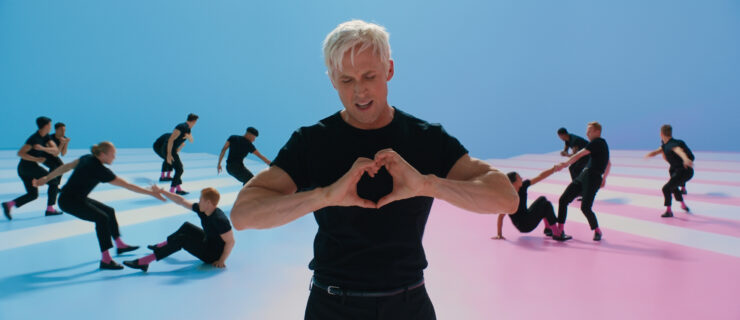How "Penny Dreadful: City of Angels" Got 104 Dancers Swinging For an Epic Dance Scene
At first glance, “Penny Dreadful: City of Angels” does not seem like a show that would employ a choreographer. The SHOWTIME series—a spinoff of supernatural Victorian London thriller “Penny Dreadful”—follows a Latino family through a pre–World War II Los Angeles rife with racial and political tension.
But in episode three, “Wicked Old World,” airing this Sunday, viewers are introduced to dance hall The Crimson Cat in what can best be described as an explosion of movement. Three of the show’s main characters, portrayed by Natalie Dormer, Johnathan Nieves and Sebastian Chacon, ably take to the dance floor in swing-infused choreography that feels both expertly delivered and improvisatory. The way they move tells the viewer a lot about the characters, and the wild, joyous energy of the 104 dancers populating the space is the best introduction the key location—which will reappear throughout the season—could ask for.
The man behind the moves is Irish choreographer Tommy Tonge, who got involved with the original “Penny Dreadful” when it was filming in Dublin. We spoke to Tonge about the process of getting everyone up to tempo.
On the role dance plays in the show
“It’s set in 1938, but it’s almost a commentary on today,” Tonge says. “While the previous show dealt with actual monsters, this show deals with the monster within—there’s a lot of the darkness in human nature, and what people are capable of, given the wrong kind of power. So the role that dance plays in this show is lightness, joy, celebration, in testing, bleak times. It is a celebration of life.”
“It speaks to the period, too,” he adds. “It was a social event on the calendar. Either you went to the movies or the dance hall. On the dance floor is where people connected.”

Justin Lubin, Courtesy SHOWTIME
Getting the period right
Tonge started by researching the history of Los Angeles in the 1930s before diving more specifically into the development of swing dance. He also took a crash course in various Latin dance styles. “It’s predominately a Latino community that comes to The Crimson Cat. I wanted to invest in really learning the disciplines and the different rhythms.”
One character’s storyline led to a particularly influential piece of history. “One of the sons, Mateo, feels disenfranchised and is lured in by the glamour of the Pachuco culture—the beautiful clothes, the big zoot suits,” Tonge says. “I wanted their movement to feel earthy, grounded, rooted; there was always a masculinity that ran through it. If you look at how a lot of Latin dances have evolved to today, you really accent the hips and are up on your toes, and it’s very articulated. But it derives from early Latin dances that are into the floor, heels lowered, the arms are athletic, loose—nothing too sharp.”
But the movement style that appears in the show has a decidedly contemporary flavor. “We decided to take a little artistic license and stretch things creatively,” he says. “I wanted it to feel like you couldn’t identify where swing, Lindy, Pachuco, mambo, other Latin dance styles began or ended. It has heavy influences, but it’s a little more current in the sound, and so the movement had to reflect that.”
“Out in the world, these characters might have been poor, segregated, disrespected, disenfranchised, but in here, this is a safe space, ” he adds. “You can forget about all that, you can just dance and connect with people from your culture. I approached the movement as similar to that—it didn’t feel so restricted, different ethnicities and styles went into a big melting pot.”
Creating to bespoke music
Usually when working in film or television, a choreographer will be handed a piece of music to work with—or even just given a length of time and the type of genre or feeling the production is looking for, with the music not composed or added until post-production.
But with “City of Angels,” Tonge says, “I was in the recording studio when it was being recorded.” The music was specifically arranged for the dance. “To be in there, on the ground level building it from the bottom up was really amazing.”

Justin Lubin, Courtesy SHOWTIME
Working with actors—plus 104 dancers
Tonge worked with Sebastian Chacon, the actor who plays Fly Rico, three times a week for six weeks before they began filming his dance sequences. “I took the approach of, It’s not enough for him to pretend to be the best dancer in The Crimson Cat,” Tonge says. “He had to be the best dancer in The Crimson Cat.” Johnathan Nieves, who plays Mateo, had a similar training schedule. “The actors were all so engaged. They took it seriously and invested so much into it.”
Meanwhile, Tonge was also choreographing for the 104 dance extras he’d personally auditioned for the show. He had one week with a “skeleton crew” of 10 dancers to workshop his ideas, during which he also started getting the actors used to having more bodies moving around them. After that, he had one week with the full cast of dancers—though they were divided into groups and came in on different days to keep things manageable—before everyone came together for a full day of camera rehearsal.
“All the departments came together, and the crew came in and mapped it out so everyone could see what we were getting ourselves in for,” he laughs. They shot the sequence over three days. Because of the amount of prep work they’d done (“The movement went through a very specific approval process with the producers,” Tonge says), very little, if anything, had to be tweaked by the time they got to shooting. “It was big and ambitious, and there was a lot at stake, but there was a calm about it because of the preparation.”
“That was the most challenging, logistically, but it’s also the most rewarding,” he says, “because you get to look at it and say, Okay, it works! I hope…”




